Matador Network's Blog, page 730
December 15, 2020
Political street artists artists

When we think of contemporary art, we generally understand it to be under lock and key, relegated to the inside of a museum, gallery, or within a wholly inaccessible private collection. While public art seeks to disavow the notion that art is merely meant for the few, not all of it is accessible in a cultural respect — even though, by definition, it is accessible to all. Though the long tradition of public art begins way before our contemporary understanding, the emergence and ongoing explosion of this work as a popular cultural currency has transformed the ways that people engage and view media previously seen as elitist.
This is the gap that street artists have traditionally filled: Their work is literally in public places, and the subject matter is traditionally — though not exclusively — selected with the layperson in mind. Eschewing the avant-garde, it is created to be interpreted by the average passerby. This notion of audience is exactly what can make street art so powerful and persuasive, and maybe, because of its populist nature, the perfect medium to apply a political bent.
While you may already have a couple of favorite street artists from your own community, a growing legitimacy surrounding the genre gives art appreciators throughout the world more access to work they may have otherwise not been able to engage with. World wide, more folks are applying their talents to informal, outdoor spaces in order to challenge the status quo, demand legitimacy for underserved communities, and create work that inspires a new generation of revolutionaries. If you’re looking to widen your knowledge of art as activism worldwide, here are a few artists with whom you can begin that journey.
1. Zéh Palito, São Paulo, Brazil,

Photo: Zéh Palito/Facebook
Brazil is a country where Blackness, to put it excruciatingly simply, is complex. Though they never had a formal system of apartheid — like, for instance, Jim Crow in the United States, which segregated people by race — there has long been a social hierarchy that is demarcated by skin color. There are millions of people living in the country of African descent, but Brazillian culture would dictate further stratifications between them depending on the individuals’ ethnic makeup. Afro-Brazillian artist Zéh Palito seeks to unite Brazilians of African descent with his artistic practice by creating a visual cornerstone from which Black pride can pivot.
His work borrows items found in the natural landscape of Africa and unites them with the tropicalia Afro-Brasileiros find in their everyday lives. He removes his Black subjects from the mundane and places them in spaces that are simultaneously unmistakable yet removed from reality, largely with his fantastical choices in color palette. He applies paint energetically, either by stylus or spray can, and his unmistakable style of application, a hallmark of his work, saturates his subjects with an infectious energy.
One of his recent pieces in São Paulo marked a huge turning point in his career; this three-story high painting of Luciana Tavares marked the first time he was commissioned for a portrait on such a large scale. “Works like this with portraits of black or indigenous people are hardly approved,” said the artist of the work. “However, in this mural, I managed to faithfully reproduce the brushstrokes and feelings that I put on a canvas here on the wall.” This piece was made in collaboration with Museu de Arte de Rua for Black Awareness Day. The mural can be found at Rua Abílio Soares-17, Paraiso, São Paulo, Brazil.
2. Sophia Dawson, New York, US

Photo: Sophia Dawson
I first met Sophia Dawson on the immaculately groomed lawn of the Confidante Hotel in Miami Beach back in 2018. “I like to work BIG,” she told me, gesticulating grandly from her repose in a luxuriously cushioned Adirondack chair, herself draped in a chic, colorful duster. She had just the day before completed a mural in Miami’s Wynwood District.
She’s spent her entire career creating work that exposes “the stories and experiences of individuals who are striving to overcome the injustices they face,” and she accomplishes this both with her subject matter and processes. Her work depicts folks affected by anti-Blackness. She paints the activists that have been incarcerated and the mothers left behind to remind us of the human toll of systemic racism. Her technique seeks to find multitudes in Black skin; Dawson’s skin tones are built layer by layer, swaths of colors draped atop each other, though an unmistakable Blackness is revealed at their nexus.
Over the summer she got the chance to apply her considerable skill to one of the many Black Lives Matter murals that sprang up on American streets beginning with the one in Washington DC. In this one, located in New York’s Foley Square, Dawson took charge of the word “Lives,” designing each letter differently. “The ‘L’ contains the faces of the mothers who have lost their children to police killings,” said journalist Julia Jacobs for the New York Times. “The ‘E’ contains faces of Black Panther Party members who are currently in prison, and the ‘S’ carries a passage from the Bible.” This mural can be found on Centre Street at Foley Square, New York, NY.
3. Osa Seven, Lagos, Nigeria

Photo: Oso Seven/Facebook
Osa Seven has been obsessed with art and design since he was a child. Though Lagos, from which he hails, didn’t have a tradition of professional graffiti artists when he began, he leveraged his knowledge of marketing and branding to create a thriving art business for himself in his native Nigeria. “I love graffiti,” says the artist, “like every other art form it has the ability to tell amazing stories.” Since he was a teenager, his goal has been to tell the stories of Lagos with public art, and he has not stopped since.
Because there are not the same traditions of graffiti in Lagos as exist in other countries, Osa had a certain freedom to invent his own style. Drawing from elements of western graffiti and adding pixelated effects common in graphic design, a field he has worked in, he has created a genesis of the two that now defines street art in Lagos.
In maybe his most ambitious project to date, in collaboration with the Ministry of Tourism, Arts, and Culture, he created a mural for the event Lagos @50. The mural is composed in three distinct sections separated by the disembodied front facades of two keke napep — or tuk-tuks. On the far right, it features the visage of the National Art Theatre, highlighting his skill at producing a computer-generated-esque style.
The far left features a stylized image of Bodun Shodeinde’s Aro Meta installation, the famous Welcome to Lagos sculpture aside the Lagos-Ibadan expressway. In the middle, in classic graffiti, is the simple message “Lagos,” which reminds the viewer that the stories of Nigeria are free to be interpreted by a new school of creatives. You can find this mural at the Law School bus stop on Ozumba Mbadiwe Road, Victoria Island, Lagos, Nigeria.
4. Hamza Abu Ayyash, Ramallah, Palestine

Photo: Philip Rahnhopper
The Israeli West Bank barrier, the illegal wall that separates Israel from Palestine along the green line, has different names depending on who you ask. Its Hebrew name translates to “separation fence” while its name in Arabic, the language spoken by Palestinians, calls it “the wall of apartheid.” Though intended to be temporary, construction began on the wall in 2002 and still stands today even though it was deemed a violation by the International Court of Justice.
While the Israeli side of the wall is largely free from decor, the Palestinian side has been transformed into an ever-fluctuating outdoor gallery of pro-Palestine street art. While international artists, such as Banksy, have been known to contribute with a series of very controversial paintings, it is the domestic artists that serve to preserve the culture of Palestine and promote the universally welcomed message that the wall should come down. Among these Palestinian artists who have made the wall their canvas is Hamza Abu Ayyash who uses a mix of Arabic calligraffiti and simple, graphic organic illustrations highlighting the struggles of the Palestinian people.
Probably his most famous body of work was his hunger strike graffiti project in 2012. Inspired by the detention of Khader Adnan — who was arrested under an indefinite detention scheme sanctioned by Israel — Ayyash produced a number of works both on the barrier wall and elsewhere in the West Bank. Each piece contains a snippet of provocative text in his distinct calligraffiti style. One particularly arresting work features a disemboweled figure, the exposed intestines rendered to resemble a mushroom cloud. The adjacent text, a quote from Nayef Bazzar — a Palestinian who spent six years imprisoned in Israel — reads, “my guts declares my identity.” This mural can be found across the street from the parking lot for Bethlehem University, Palestine, though part of it was whitewashed in 2014.
5. Alaa Satir, Khartoum, Sudan
View this post on InstagramA post shared by Alaa Satir (@alaasatir)
Beginning in 2018, the Sudanese revolution, which included months of protests, led to the removal of the long-ruling dictator, Omar al-Bashir in April of 2019, followed by a bloody transition of power. Though the timeline for the solidification of the Sudanese government is still ongoing, it will ideally lead to an equitable, stable civilian government by 2021. Within this landscape, several street artists emerged — among them Alaa Satir, whose work reminds us that within the predominantly male-led military actions, much of the work on behalf of civilians was planned and executed by women who were organizing within the communities of Sudan.
Though Satir is formally trained as an architect, she currently produces as a graphic designer, illustrator, and muralist. Satir’s work is almost whimsical but incredibly direct; her bold illustrations coupled with unambiguous text make it clear what she believes her responsibilities to her nation are. Her paintings of women — often in a stance of defiance and bearing a crown that floats like a halo — not only serve to document the women that she saw around her fighting for freedom but also inspire a new generation of girls who will learn resistance as a lifestyle.
One piece that so encapsulates her political stance is painted on a residential wall, of a festooned woman with her fist rebelliously thrust into the air. “A woman’s place is in the resistance” is printed in Arabic surrounding her. Satir said in an interview that, “it perfectly describes how we were fighting two systems at once. It was a fight that started way before the recent political uprising where we just struggled on a daily basis to be heard and included in a society that has very limited roles for us.” This mural can be found in Burri, Khartoum, Sudan.
6. Sam Kirk, Chicago, USA

Photo: Sam Kirk
Born and raised in Chicago’s South Side, Sam Kirk has been known to remark that she finds it remarkable to be living her life as a working artist. Her career began as a hobby, but in her early adulthood when she was working in her then chosen career of advertising, she began to feel the needs of her community pressing her to pursue a different path. “I started to get involved in mural work mostly because I felt like there were issues that needed to be addressed and I thought public art was a great way to start that conversation,” she told Windy City LIVE in 2019.
Kirk imbues her work with the stories and faces from the working-class neighborhoods that helped shape her. Rather than mere depictions of the multicultural people that surround her, she creates work that demands recognition for a group of people that she does not deem herself disparate from. Her work is colorful and graphic, as vibrant as the people she’s painting, and her color choices are reminiscent of the tradition of painted signs in South Chicago.
Recently, Kirk used her substantial skill in tribute to essential workers during the COVID-19 pandemic. Though only four Chicago residents lent their visage to the piece — Carilla Hayden, a USPS postal worker; Juan Burrell, a Chavez Elementary school lunchroom manager; Veronica Sanchez, a leader of the Latino Union of Chicago and nanny, and Maggie Zylinska, a domestic worker — it is meant to represent the admiration and thanks she has for all the essential workers who risked their lives to keep our communities afloat in 2020. This mural can be found in the B Line Art Corridor, Hubbard Street at Milwaukee Avenue, Chicago, Illinois.
7. Chief Lady Bird, Toronto, Canada

Photo: Chief Lady Bird
In a report leaked in 2019, the number of murdered and missing Indigenous women (MMIW) over the past 30 years in Canada was so steep that it has been characterized as the “Canadian Genocide.” While all members of Indigenous communities are subject to the perils of systemic racism, women and girls are particularly vulnerable. Indigenous women in Canada are over three times more likely to experience violence than their non-Indigenous counterparts. But an often unseen consequence of the staggering rates of gender-based violence against these communities of womxn is the way it creates the stereotype that they should remain sexually puerile, removed from owning or expressing sexuality in any way lest it “attract” violence against them.
Chief Lady Bird, herself of Chippewa and Potawatomi descent, uses her artistic practice to subvert these stereotypes. She grew up on a reserve but now lives in Toronto where she works as a muralist and illustrator. “One [issue] that I think needs to be addressed is the perception that Indigenous womxn can’t or shouldn’t make work about sex and sexuality because it puts us further at risk,” she told Flare in 2018. In her work lives the experiences and struggles of Indigenous womxn, including the expression and ownership of sexuality.
In 2017 as a part of Unceded Voices, a convergence of anti-colonial artists in Montréal, Chief Lady Bird partnered with fellow Toronto artist Aura Last to create Hoopdancer, a public work depicting an Indigenous woman transfixed in dance in their typical bright, holographic color palette. The artists collaborate on murals and other works so frequently that their styles have evolved together, creating their own school of two. This mural can be found at 393 Rue Saint-Ferdinand, Montreal, Canada.
8. Libre, Mexico City, Mexico
View this post on Instagram
Raw meat sandwich from Wisconsin

Recently, the Wisconsin Department of Health Services issued a rather unusual warning to the residents of Wisconsin: Stop eating raw meat sandwiches. Raw ground beef, which is processed using several different types of machinery in a factory, is susceptible to cross-contamination from bacteria that can sometimes cause fatal Salmonella and E. coli infections (the CDC made a similar ruling in 2013). This is common knowledge that most people thought was already well understood. The department’s pronouncement — and various reactions to it from Wisconsinites who refuse to give up the sandwiches — quickly went viral.
In a series of Facebook comments responding to the department’s post, one user declared that he would “eat it on any day that ends in Y” while another swore that in 60 years of eating raw meat sandwiches he’s never become ill. The first reactions were twinged with disgust and disapproval; after all, it does not seem, at first blush, exactly normal to eat uncooked ground beef mashed between two pieces of bread.
News headlines all over the internet scolded Wisconsinites for eating so-called “cannibal sandwiches.” But not everyone in Wisconsin has tried or even heard of cannibal sandwiches; in fact, one Matador editor from Wisconsin had never heard of the dish until it went viral and says several of her friends were just as shocked to learn about the supposed local tradition with a disturbing moniker. Unfortunately, it didn’t take long for misconceptions about this Wisconsin delicacy to circulate around social media.
The truth about cannibal sandwiches
Sometimes also called tiger meat, raw ground beef sandwiches aren’t so strange when you consider that many cultures from all over the globe incorporate raw meat into their cuisines. Kibbe nayyeh is a Lebanese dish made of raw lamb. In Korea, yukhoe refers to raw beef topped with egg yolk. Wisconsin’s tiger meat might even favorably be compared to steak or tuna tartare, though those dishes are, to be fair, usually prepared from fresh, high-quality cuts of meat — not pre-processed and packaged ground meat.
Still, it’s not exactly true that Wisconsinites are picking up random packs of ground beef in order to prepare a sandwich similar to one you might pick up at a deli counter or a sub shop: This is a thin layer of raw ground beef spread on small square of toast, seasoned with salt and pepper, and topped with a sprig of parsley topped with a few raw onions.
“It was definitely a ‘special occasions only’ thing, and it was usually on a party platter for the more working-class side of my family at things like Christmas,” Courtney, a freelance writer who grew up in southeastern Wisconsin and is now based in Germany, tells me. “My grandpa [was] a steelworker, so it was [out] to impress him. My parents treated it like a delicacy so it was rather rare to have.”
Courtney says her family didn’t think too much about health guidelines 30 years ago when she first tried it, but she recalls that there was ground beef marked specifically for this purpose at the grocery store. Those memories are echoed by Glenn, another Wisconsin resident with whom I spoke. Glenn grew up in Wausau (though he lives in Cedarburg now) and remembers that “wildcat,” as it was referred to in his family, was “sold pre-packaged at the supermarket butcher, already seasoned and with onions mixed in.” He says that due to health concerns that practice has largely ended within the last couple of decades.
“We’d set it out alongside a loaf of mini marble rye bread,” he recalls. “You’d just scoop a spoonful onto the bread, and it’s a little two-bite snack. It was just around the holidays. During the day, before dinner, there was always a spread of snack foods out: chips, dips, olives, cheese, sausage, crackers, pickled herring. It was in that spread.”
He compares the flavor to a pâté — though it’s not as smooth and creamy, the meat isn’t “grainy or mealy,” either. “Just a clean bite with a little tooth to it,” Glenn says. “The flavor is really a contrast of the caraway in the rye bread, the sharp flavor of the onion, with a little beefy flavor. It’s not quite the same production level as a fancy tartare, but if you’ve had that you get the gist.”
Glenn disliked wildcat as a kid and only came to try it for himself in his 20s, but he says he’d avoid it now because of possible contamination. “I don’t want to go through the trouble of sourcing my own cuts, grinding it, and seasoning it myself, just for a few bites,” he tells me. “I’m by no means opposed to eating it. Just not worth the effort to make sure it’s as safe as possible to consume.”
That safety-first attitude might not be adopted by all Wisconsinites who grew up eating tiger meat like Glenn did. In fact, he thinks he might even be willing to eat it again despite health warnings if, he says, “I knew and trusted the butcher or prepped it myself.” And he would wager that folks from Wisconsin who once enjoyed tiger meat but gave it up did so not because of the Wisconsin Department of Health Services but because it was discontinued at grocery stores.
“I honestly think that it’s probably convenience rather than health concerns,” he says.

Photo: juefraphoto/Shutterstock
If your family is intent on eating tiger meat this holiday season — or you just want to try it for yourself — there are simple ways to limit your exposure to harmful bacteria. Dr. Zorba Paster, a physician and public radio host, told Wisconsin Public Radio that “The best cannibal sandwich with the lowest risk is if you take steak, or something like steak, and you grind it up. The worst cannibal sandwich is if you simply eat ground beef out of a package because then the risk of E. coli is greater.”
The question remains, however, why some people from Wisconsin are so passionate about their raw meat sandwiches. The answer, as it turns out, is much simpler than you might think: It all comes down to European immigrants to Wisconsin. Tiger meat sandwiches are likely a close relative of mettbrötchen, which is a dish of raw minced pork spread on a bread roll and seasoned with salt, pepper, and onions that’s served in Germany and Belgium. A similar dish called biff tartar is served with pickled beets and capers in Norway, another country with a strong immigrant population in Wisconsin.
“[It’s] definitely a holdover from the German mettbrötchen,” says Glenn. Courtney agrees that tiger meat’s popularity in Wisconsin is owed to its German community; she refers to her grandmother’s family as “OG German immigrants,” relatives who routinely served tiger meat on New Year’s.
Tiger meat has certainly fallen out of fashion (and perhaps that’s for the best; if the health department tells you to do something, you should probably listen), but regardless, it doesn’t deserve the hate or the disgust it received on social media. It’s part of a long tradition of raw meat dishes, which you can find in almost every part of the world, and its legacy is rooted in Wisconsin’s immigrant history. It may not be your first choice for a holiday appetizer, but it’s part of the lexicon of wacky American cuisine, as patriotic as frog eye salad and hot Dr Pepper. 
More like thisFood + DrinkWhy you have to travel to Minnesota to find North America’s true wild rice
The post The real story behind why some Wisconsinites eat raw meat sandwiches around the holidays appeared first on Matador Network.

Win a trip to Iceland in 2021

Icelandic outerwear company 66˚North is partnering with adventure photographers Benjamin Hardman and Alex Strohl to offer a photography-themed trip to Iceland in 2021. The prize includes round-trip flights for two from any location directly serviced by Icelandair, as well as a day with Strohl and Hardman exploring their favorite locations in Iceland. Accommodations, unfortunately, are not included. The runner-up prize is a Snæfell waterproof shell jacket, which usually costs $500.
The description of the contest explains that during your travels with the photographers, you’ll “learn tricks of the trade when it comes to Arctic photography or trekking, or just enjoy a day out in nature exploring Iceland with these two world-famous adventurers.”
To enter the contest, just fill out the form online and follow 66˚North on Instagram, or join the 66˚North club on Strava. Only those 18 or older are allowed to apply. Prize winners will be selected at random on December 21, 2021, and the trip itself will take place on dates in 2021 that work for both the winners and photographers.
Although Iceland’s borders are still closed to US and Canadian citizens, there is hope that those restrictions will soon lift as vaccines become more widely available throughout the world. 
More like thisRoad TripsHow to explore Iceland on its wild F-roads
The post Win a free Icelandic adventure with two professional photographers appeared first on Matador Network.

Live carp tradition for Wigilia

In many American households across the country, the holiday season requires a dose of chaos. There is much hustling and bustling between the grocery store and the kitchen, prepping, stirring, roasting, and whipping together meals for loved ones. Much of this cooking will involve handling fish and fowl for those meat-eaters among us, but for the most part, the animal is blessedly already dead — needing only to be brined or baked before serving. For some people in parts of Eastern Europe, however, that is certainly not the case, and dinner is very much alive when it arrives in the kitchen a few days before Christmas Eve dinner.
For many years, custom in Poland and its neighboring countries dictated that families head to their local fish market and buy a live carp for the holiday season. Instead of butchering it right away, they fill up the tub and keep it alive for the next two or three days. At the end of its tenure as a resident of the bathroom, the carp becomes the main course at the elaborate 12-course feast (one dish for each of the 12 apostles) known as Wigilia.
You can thank the Roman Catholic church for this fishy custom: Christmas Eve was traditionally considered a day of fasting, and devotees were not permitted to eat meat. Seafood, however, was entirely permissible, and over the years, Christmas Eve dinners evolved to include fish as the main course. Carp is the most popular choice in Eastern European countries like Slovakia, Poland, and the Czech Republic, as well as Germany and Croatia. For the latter two countries, the fish is thought to bring such good luck and prosperity that the scales are sometimes tucked under dinner plates and carried around in wallets to attract wealth.
According to NPR, the carp in the bathtub tradition is likely rooted in a time of pre-refrigerator necessity, and the practice was a way to keep the carp fresh before it was time to cook it. It might also be a method for clearing mud from the carp’s digestive track before cooking, but NPR spoke with a scientist who says it would probably take much longer than three days to be effective.
“The Christmas Eve carp swimming in the bathtub still happens today, although it was much more common decades ago when families would not have had a refrigerator in the kitchen,” confirms Lois Britton, an American expat who has lived in Poland for about a decade, and the author of The Polish Housewife recipe blog and cookbook. “There are a couple of reasons for the bathroom aquarium. Carp often has a muddy taste, so a few days in clean water without food is supposed to cleanse the fish and improve the flavor. They seem to do well with tap water [but] my friend, Grzegorz, tells me they occasionally had a runaway — carp would jump out of the tub and have to be returned. His parents added a bit of salt to the water and when the fish started to swim sideways, it was time.”
Once Christmas Eve arrives, the carp’s time in the bathtub is up. Then, it’s all up to the family to kill, butcher, and cook — which can sometimes prove challenging. Karolina Cala, a digital marketer based in Manchester, says her Polish family has never partaken of the tradition, but her mother recalls keeping carp as a temporary pet before Christmas Eve in her childhood — and skipping showers because the carp took precedence over hygiene for those few days it lived with the family.
“My mum has told me of what it used to be like when she was younger,” Cala tells me. “The carp lived in the bathtub for a few days, and then grandpa would smack it with a hammer on Christmas Eve. Once, the carp managed to jump out of the tub and kill itself. They still cooked and ate it.”
The Independent reports that in places like the UK, where there is a large population of Polish immigrants, the tradition is going out of style, mostly because some grocers have stopped selling live carp. However, it’s recently become less popular in Poland, too: Cala confirms that supermarkets have also begun to ban the sale of live carp.
“Up until as recent as last year, you could stroll into carrefour and there would be an enormous pool with live carps inside,” Cala says. “I have some quite vivid childhood memories of seeing fish being carried by shoppers in water-filled plastic bags.”
This Christmas tradition hasn’t faded completely into legend though. Zuza Zak, author of the cookbook Polska, thinks that bringing home the live carp is mostly confined to more rural areas of the country these days, “as more comfort orientated city folk are more reluctant to give up their bathtubs.” Like Cala, Zak’s mother recalls (not entirely fondly) giving up bath time because the carp occupied the bathroom.
“A fresh carp was clearly the priority because everyone put up with this discomfort,” Zak tells me.
Zak and her family moved to England when she was eight and stopped carrying on the Christmas carp tradition — partially because it was difficult to get fresh carp and partially because no one liked the fish anyway. Today, Zak serves several varieties of herring at her Wigilia feast instead.
Considered a bringer of prosperity, luck, and wealth, it might not be a stretch to say that in many countries throughout Eastern Europe the carp is a beloved companion to the Christmas season. Carps might not swim in many bathtubs anymore, but if you’re still nearly guaranteed to see one at the dinner table at the very least — and if you do, you might snag one of its scales to keep in your back pocket. You never know what blessings the carp might bring in the new year. 
More like thisFood + Drink9 countries where it’s not Christmas dinner without fish
The post Why some Polish families keep a live carp in the tub before Christmas appeared first on Matador Network.

Best ski resort places in Midwest

The upper Midwest has many tranquil resort towns that double as local ski towns in the colder months. They’re chilly but beautiful when covered in winter’s white cloak, and because it’s the Midwest, they’re also located lakeside. Many are right on the shores of the Great Lakes. They may not have the towering altitude of the Rockies, but they do have the skier’s attitude and, as an added bonus, are both closer and far cheaper than traveling to ski destinations out West. Each of these three towns offers plenty to keep you occupied on and off the slopes.
1. Bellaire, Michigan
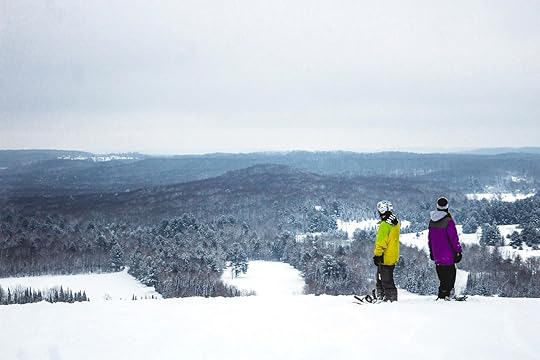
Photo: Shanty Creek Resort
If there’s one great place in the Midwest to dip your toes into ski culture, it’s in Bellaire, a town of about 1,200 that’s just 45 minutes from Traverse City and its regional airport. You can ski, of course — the adjacent Shanty Creek Resort offers two connected ski hills and the best tree skiing in northern Michigan. But here it’s all about the full experience. There’s nowhere better to experience après culture for the first time than The Shanty, located at the resort, or to take that first hot tub plunge after a long, cold day out in the snow. Book a room at an on-mountain lodge in any of the resort’s three villages and wake up to alpine views before making your first turns of the day, and pull into the lodge for lunch and a cup of hot chocolate. Indeed, Bellaire and Shanty Creek bring a welcome dose of European ski culture to the Midwest.
Bellaire’s most famous pub, Short’s Brewing Company, helped put Michigan craft beer on the national map and can now be found in high-end beer bars and mountain towns from the Great Lakes to Vail. Here is where you’ll find the beating heart of Bellaire’s social scene, with live music and jazzed up American cuisine making the pub a great place to head after a day on the slopes. The Glacial Hills Pathway packs into a somewhat strenuous but fun fat bike trail once the snow falls, with snowshoeing doable on the town’s trails and ice fishing also available at Lake Bellaire.
As an alternative to staying at the ski resort, try quaint lodging in Bellaire like the Bellaire Inn, a motel within walking distance of the town center and its restaurants and shops. Airbnbs and other rental properties in and around town — many along Lake Bellaire and even further outside of town along the east arm of Grand Traverse Bay — provide a remote but still easily accessible way for families and larger groups to all stay together under one roof.
Local gear shop and rentals: Shanty Creek Resort Snowsports Center
Spot for après-ski revelry: Short’s Brewing Company
2. Harbor Springs, Michigan

Photo: Thomas Doerr/Boyne Mountain
Located along the shores of Little Traverse Bay, Harbor Springs is incredibly popular with boaters, golfers, and other travelers from down south during the summer months. But it shines in winter as the Midwest’s most authentic ski town, with three of Michigan’s top ski resorts — Boyne Highlands, Boyne Mountain, and Nub’s Nob — just up the road. Even if downhill skiing isn’t your thing, each of the three resorts offers groomed cross-country ski trails and the full day lodge experience with dining, coffee, and cocktails around the fireplace.
On a non-ski day, stop by the Harbor Springs History Museum to learn about the role of skiing in the area’s history, and consider sledding or skating at Kiwanis Park. A stroll from the corners of State and Main streets will lead you past restaurants including the trendy American kitchen Paper Station Bistro and its sister restaurant State Road Provisions, upscale The New York Restaurant, and the casual, beer-heavy Bar Harbor. Like good ski towns the world over, nearly anything to eat, drink, or do is available within walking distance of the town center. Just bring a warm pair of boots and a scarf — it’s frigid once the sun goes down.
Local gear shop and rentals: The Outfitter
Spot for après-ski revelry: Turkey’s Pizzeria
3. North Shore, Minnesota

Photo: Lutsen Mountains Ski and Summer Resort
Say you’re a true ski bum. The type that prefers to spend your evenings plotting the next day’s turns and who has never let a bit of sunrise frost keep you from catching the first chair. For you, dear hardy skier or boarder, the best place to find yourself in between Colorado and Vermont is the Lutsen Mountains of northern Minnesota. Minnesota’s North Shore offers on-water and on-mountain activities, with tiny towns including Lutsen and Tofte serving as basecamp along Highway 61 between the larger hubs of Two Harbors and Grand Marais. But it’s the outdoor experience that defines this area, and that has brought canoers to the Boundary Waters Canoe Wilderness Area, boaters to the waters of Lake Superior, and skiers to Lutsen Mountains Ski and Summer Resort.
Comprising four peaks (in the Midwestern sense, at least, as the highest is a mere 1,688 feet), Lutsen Mountains Resort is a full-service mountain destination complete with lodging, dining, and one of the region’s premier live music venues, Papa Charlie’s. The Lutsen Mountains receive 120 inches of snow per year, meaning your chance at an elusive Midwestern powder day is better here than anywhere else. When it’s time to head up to the pistes, you can ride in one of the nicest gondolas in the Midwest.
Snowshoeing is a common activity on the area’s summer hiking trails, and if you’re really feeling adventurous, try skijoring — a sport that involves enlisting your dog (or that of a willing companion) to serve as Rudolph-for-a-day while pulling you on skis across a frozen lake, road, or field. When hunger bites, stop into Mogul’s Grill and Tap Room or the Summit Chalet, or head down to the lake to dine by the water at Poplar River Pub.
Local gear shop and rentals: Lutsen Recreation
Spot for après-ski revelry: Papa Charlie’s at Lutsen Mountains Resort 
More like thisWinter SportsThe 9 most epic winter experiences to have in the Midwest
The post The 3 most epic ski towns in the Great Lakes that rival the best of the West appeared first on Matador Network.

Scotch whisky-aged Kit Kats

Japan is well-known for its incredible variety of Kit Kat flavors found nowhere else in the world, like wasabi, edamame soybean, cinnamon cookie, and more. This time around, it’s a very adult flavor that Nestlé Japan has come up with: a Scotch whisky-infused Kit Kat.

Photo: Nestlé
The Kit Kats are made using crumbled pieces of cacao nibs aged in barrels of Scotch whisky on the Scottish island of Islay, which is hallowed ground for whisky lovers. The barrels are rotated once a week to make sure the nibs adopt the taste and aroma of the whisky. The result will be a chocolate infused with a peaty whisky finish.
According to Nestlé, it’s “a bitter chocolate for adults that lets consumers enjoy a hint of refined whisky aroma and taste. During the 180-day period, whisky barrels are manually rotated at a pace of once a week and this puts all of the cacao nibs in the barrel into contact with the whisky barrel’s interior.”
They will only be available online and in Kit Kat’s specialty chocolate shops in a few Japanese cities for $2.90 a piece. 
More like thisDessert9 Japanese sweet treats the world needs to know about and try
The post These new Japanese Kit Kats are infused with aged Scotch whisky appeared first on Matador Network.

Best things for wildlife 2020

If 2020 taught us anything, it’s the value of looking for silver linings. Perhaps the best example of light emerging from the darkness is the way wildlife around the globe has been able to adapt, cope, and even thrive as confusion and uncertainty reign supreme in the human world. While issues like poaching and the dependency of conservation on tourism remain very real issues in the world of wildlife, there is also a lot of great news to celebrate from this year. From greater scrutiny of the wildlife trade to giving animals a brief respite from human activities, these are the top wildlife wins in 2020.
1. Koala populations increased
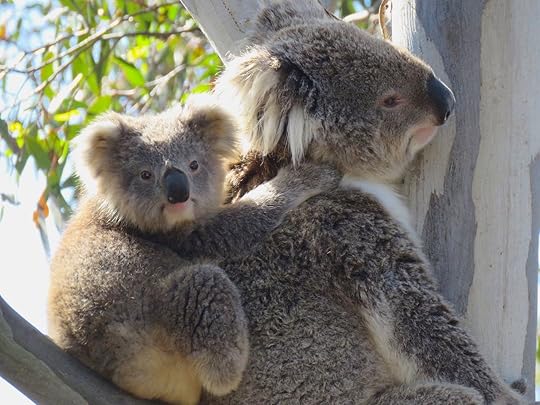
Photo: Ali Wunderman
The Australian bushfires kicked off the dumpster fire that is 2020, but the pandemic followed so closely on their heels that we hardly had time to check in once the fires subsided. Despite wombats’ heroic efforts to shelter other species, the fires destroyed huge swathes of koala habitat, threatening them with extinction in some parts of the country.
Fortunately, despite these challenges, koalas seem to have come out on top. “2020 in the You Yangs, near Melbourne, has been a great year for koalas. Things are looking up,” says Janine Duffy of Echidna Walkabout Tours and the Koala Clancy Foundation. “The wild koala research population in the You Yangs has four beautiful joeys (baby koalas), all born between January and March 2020.” Plus, throughout the year, the foundation was able to plant 9,000 koala trees in ideal koala habitats, which the joeys can move into when they become adults. If that wasn’t inspiring enough, the joeys are also beyond adorable.
“Waa is always hungry, very cheeky and mischievous; Lara is shy; Kallama is beautiful and brave and has already left her mother’s tree; Balyang is every bit the king-in-making: son of the dominant male, big and confident,” says Duffy.
2. Colorado voted to bring gray wolves back to the state

Photo: Pat-s pictures/Shutterstock
Gray wolves, once a nearly ubiquitous species found in the United States, have all but disappeared from the country. A ballot measure in the November election aims to reintroduce the apex predator back to Colorado, and it narrowly won. In the context of the Trump administration actively removing protections for the animal, this victory in Colorado will give gray wolves a fighting chance to reclaim their territory. This reintroduction could help even out the ecosystems that evolved with wolves as part of the equation, stabilizing populations and culling sick ungulates. Perhaps the most exciting prospect for some is the sheer amount of money that wolf tourism can bring, especially relative to the low numbers of livestock they kill. All in all, this is a great step in the right direction for a misunderstood species.
3. California’s new Wildlife Defense Network saves a record number of wildfire-stricken animals

Photo: Tory Kallman/Shutterstock
It’s hard to say that anything good came from California’s devastating wildfires, but wildlife may have a different perspective, thanks to the newly implemented Wildlife Defense Network (WDN). Climate change has redefined the fires as a very unnatural disaster, and because of the human impact, wildlife is at a loss to deal with them properly. Fortunately, UC Davis and the California Department of Fish and Wildlife teamed up to incorporate wild animals into the state’s disaster response and successfully rescued a record number of animals from fire-induced suffering. By creating a network of animal caregivers to physically retrieve and then treat affected animals, species like black bears, mountain lions, and foxes can now avoid months of suffering following wildfire-related injury. And through the innovation of WDN’s Dr. Jamie Peyton, who pioneered a way to treat burns with tilapia skin, these animals can recover faster than ever before.
4. The pandemic gave wildlife a moment to recuperate
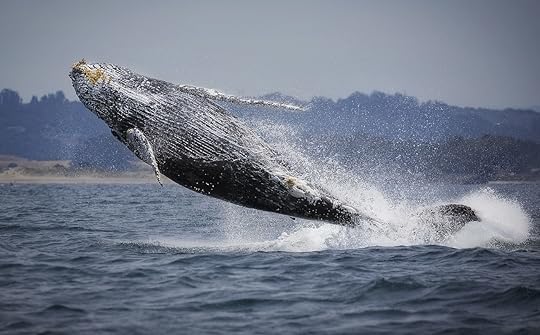
Photo: Chase Dekker/Shutterstock
In the early days of the pandemic, which somehow feel almost wistfully nostalgic at this point, reports of wildlife thriving amid a global quarantine became regular news to the point of a meme circulating about humanity being the actual virus. Claims of birds singing louder and expanding their territories while car accidents involving animals decreased by 58 percent, thanks to road traffic going down. While some stories, like dolphins returning to Venice’s canals, were nothing more than fantasy, around the globe people shared anecdotes of seeing wildlife actively exploring beyond their typical boundaries — proof that, in our absence, they can quickly thrive. Knowing that whales are going to be less stressed due to reduced sea traffic is as close to a true silver lining as this year can get.
5. The plight of captive big cats became a household topic

Photo: effective stock photos/Shutterstock
Locked indoors with naught but an incomplete puzzle and a Netflix account for entertainment, it’s no surprise that the outlandish documentary, Tiger King, became all anyone could talk about through March and April, so effective was it at distracting us from the pandemic. While the interpersonal, drug-fueled dramas did their job at entertaining, the actual stars of the show — the tigers and lions trapped in squalor by these same madmen — finally got the attention they deserve. Suddenly, the average American became aware of loose laws enabling ownership of exotic pets to the point where more tigers exist in captivity than in the wild. Taking photos with drugged up tigers became a social faux pas, and most importantly, owners of these roadside zoos faced legal repercussions for their heinous exploitation of wildlife.
6. Cher rescued an elephant

Photo: FOUR PAWS International/Facebook
The rescue of a single, lonely elephant may not seem like much in the scope of how tough these animals have it, but after three decades of living in miserable conditions, Kaavan’s rescue is exactly the kind of uplifting news we need. This story is proof that bad times do indeed end, and that with enough determination, wild animals can find respite from everything we put them through. To make matters more interesting, singer Cher was heavily involved in relocating the animal from a dingy zoo in Pakistan to an appropriate sanctuary in Cambodia, where the 35-year-old elephant will no longer have to suffer in isolation. Cher’s determination to make life better for Kaavan — first by singing to him, and then by facilitating his rescue — gives hope for other creatures looking forward to the day when they too experience freedom. (She’s now working on freeing a gorilla trapped in a Bangkok mall.)
7. The Pebble Mine project in Alaska is dead — for now
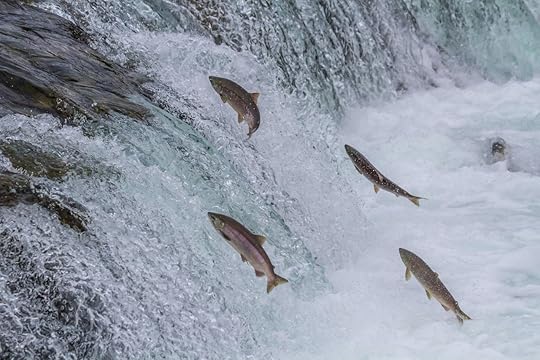
Photo: Sekar B/Shutterstock
It can be hard to keep track of the many ongoing projects designed to pillage the earth at the expense of the planet and its animals, but perhaps the most notorious was the proposed Pebble Mine in Alaska, which was set to devastate the habitat of brown bears, poison spawning areas for salmon, and destroy the home of more than 190 bird species. With so many other environmental crises going on, thanks to Trump’s decidedly anti-environmental federal administration, it was a challenge for Pebble Mine to get the attention it deserved, but the US Army Corps of Engineers came through in the end by denying a permit for developers to build it. For now, Alaska’s gold and copper stores will remain untapped underground, while the cherished Bristol Bay will remain wild and free.
8. Tasmanian devils returned to the Australian mainland

Photo: Tom Reeves Photo/Shutterstock
Though the name may be deceiving, Tasmanian devils did actually reside on the mainland of Australia. The misnomer comes from the fact that the last time they were seen there was some 3,000 years ago, long before modern taxonomy even began to exist. That’s why their reintroduction this year is so remarkable. In an attempt to rewild the continent, 26 Tasmanian devils are leading the way for their species in a 1,000 acre wildlife sanctuary, with help from actor Chris Hemsworth. Aussie Ark, the organization spearheading this project, will orchestrate two more releases in the near future, too.
“In 100 years, we are going to be looking back at this day as the day that set in motion the ecological restoration of an entire country,” says Tim Faulkner, Aussie Ark president. Who knew these little animals could have such a big impact?
9. Pangolins get a protection boost in China

Photo: 2630ben/Shutterstock
The most trafficked animal in the world is the unassuming pangolin, prized in the Chinese traditional medicine market for its scales. This year, China made big steps to protect pangolins by recognizing they are more valuable alive than dead, making two key decisions to help end their suffering. First, in June, Beijing gave them the highest possible level of protection status under existing wildlife laws. After that, it removed pangolins from the approved list of traditional medicine ingredients. While it will take some time for these changes to take effect in terms of seeing a reduction in the number of trafficked pangolins, this is the start of a much-needed new direction for wildlife used as medicine. 
More like thisSustainabilityThe director of David Attenborough’s new film wants you to have hope
The post 9 ways that 2020 was actually a great year for wildlife appeared first on Matador Network.

December 14, 2020
Culture in French Polynesia

Editor’s note: While French Polynesia is open for tourism, COVID-19 has affected operations. Normal schedules and tours are expected to resume in 2021. Check with individual establishments for confirmation.
French Polynesia may seem like the edge of the world, mere specks of land on a vast, watery horizon. But there’s nothing remote about it. For centuries, French Polynesia (often called Tahiti though that is technically just the name of the main island) has been one of the busiest places in the South Pacific.
“Tahiti is at the center of the Polynesian Triangle,” says Milton Laughlin, a celebrated Polynesian outrigger canoeist, “with Hawaii, New Zealand, and Rapa Nui at the corners. Polynesians colonized all the Pacific with double-hull sailing boats.”
But European arrivals in the 18th century, annexation by France in 1880, and the islands’ discovery by the international jet set in the 1960s nearly killed Indigenous traditions.
“We always fished, we always sailed, we always surfed,” says Tahiarii Yoram Pariente, a Polynesian “cultural coach” who has dedicated his life to preserving the oral history and ancient ways of his country. “But we lost so much of our wisdom, knowledge, and peace.”
The revival of Polynesian culture began around 1980, says Pariente. Before that, few people wanted to learn the Tahitian language. Tattoos were frowned on. Traditional clothing, dance, and music had almost died out. Now the old ways are everywhere to be found.
Unfortunately, a typical Tahitian holiday often focuses on four-wheel-drive ATV trips in the back-country, French cuisine at candlelit restaurants, jet-ski afternoons in a resort’s lagoon, and, of course, a stay in an overwater bungalow, often run by an international chain. But it would be a shame to limit one’s time to such cliché attractions when, with little effort and great satisfaction, a traveler can dive into (and support) the Indigenous culture of French Polynesia.
On the water

Photo: Shen max/Shutterstock
The age-old Polynesian outrigger canoe, called a va’a in Tahitian, enabled the islanders to settle a vast expanse of the South Pacific. They sailed the breadth of the Polynesian Triangle by celestial navigation more than 1,000 years ago. But with European colonization and modern sailing technology, much of that knowledge was lost.
Today, Tahitians are once again masters of the racing sport. Travelers who want to learn the skill can take multi-day lessons or just an afternoon jaunt at Va’a Spirit on Moorea or Tahiti Va’a on the island of Tahiti.
Tahiti Va’a, organized by Tahitian professional racers, uses only Tahitian-manufactured equipment. Milton Laughlin, a certified coach at Tahiti Va’a, is lauded as part of only the second all-Tahitian team to win the fabled Molokai Hoe, the men’s grand championship of long-distance outrigger canoe racing. And though he can wax poetic about va’a and the Polynesian spirit, when it comes to outrigger coaching, he’s all business.
“You will learn how to paddle first,” he announces to a small group of first-timers preparing to launch a six-person outrigger.
Thanks to the short-handled, slightly flexible wooden paddles, paddling isn’t as difficult as it might seem at first. The important thing is to maintain a rhythm among all the paddlers. To do that, one of the team is chosen to shout “Ho!” on every seventh paddle. At that shout, everyone paddles once more, then switches sides, alternating left-right, left-right.
The va’a glides across the surface, like skate blades on an iced-over pond. An abundance of coral (some 170 species throughout the islands) rises from the seabed. Grouper, slender long red fish, black fish with yellow faces, and yellow fish with black faces loiter in the coral shallows. The effort of paddling is rewarded with a swift passage that gives an honest sense of accomplishment — and an understanding of how the early Polynesians conquered the seas.
Under the water

Photo: Coral Gardeners/Facebook
French Polynesia is famed among divers the world over for its wealth of coral gardens. And rightly so, except for one thing: They’re dying.
Global warming has taken a terrible toll on the islands’ coral. Unseasonably high water temperatures produce a bleaching effect. Cyclones, the crown-of-thorns starfish, and even some sunscreens (with oxybenzone and octinoxate) can kill the coral reefs.
The Tahitians, however, are not waiting for that to happen. Te Mana O Te Moana, on Moorea, is the local representative of Reef Check International and focuses mainly on research and education. Some hotels, including Bora Bora Pearl Beach Resort, have implemented voluntary guest fees that help underwrite the Biorock program, which uses electricity from solar power to help regenerate dying coral.
On Moorea, travelers can get a much more hands-on experience by visiting Coral Gardeners, an upstart replanting organization founded by Titouan Bernicot, a young freediver who realized the established powers simply weren’t doing enough. Begun in 2017, Coral Gardeners started an adopt-a-coral program to raise funds to repopulate the undersea life forms. They use “super” corals that are resistant to rising water temperatures.
“The government doesn’t do much on its own about the coral issue,” says Taiano Teiho, a founding coral gardener, thus leaving much of the work in private hands.
Visitors select a baby coral plant then swim with Teiho, Bernicot, or another staff member into the waist-high water of the lagoon and plant the coral in a bed where it will mature. Three weeks later, the staff replants it on dead coral mounds where it’s most needed. Guests are invited to name their coral. I called mine Esperance, French for “hope.” A two-and-a-half-hour tour costs $50 USD, plus a $30 contribution to select and adopt one’s own coral.
On the plate
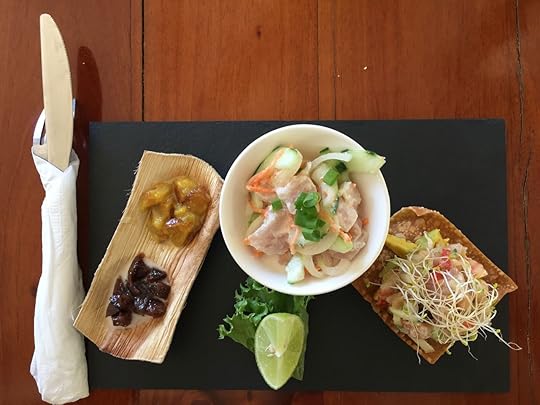
Photo: Mark Orwoll
The temptation in Tahiti, as in so many resort-intensive destinations, is to dine on little more than omelets, crêpes Suzette, chicken wings, and other familiar fare in the hotel restaurant. But there is enough variety in Polynesian cuisine to satisfy any diner, and enough locally owned eateries to provide curious travelers a surfeit of sustenance.
First and foremost is tuna. Poisson cru (raw tuna with vegetables) is for all intents and purposes the islands’ national dish, a marinated fish salad with lime, peppers, coconut milk, and whatever else the chef has in the larder.
But there’s far more, of course, thanks not just to the bounty of the sea but also to the treasures of the rich Polynesian soil. Local produce, often found at roadside stands and farmers’ markets, includes eggplants, zucchinis, bok choy, radishes, carrots, cucumbers, pumpkins, mangoes, bananas, avocadoes, and sweet potatoes.
Casual visitors to the islands can create their own culinary excursions or sign up for an organized food tour on Moorea or Papeete. Any itinerary would do well to focus on locally owned mom-and-pop cafés, out-of-the-way groceries, and so-called “snacks” (humble fast-food eateries) that cook up some of the best of what Tahiti has to offer, ranging from Chinese-influenced chow-mein sandwiches to boiled chestnut, called mape (pronounced mah-pay). Such homegrown purveyors provide a peek into the daily life of the islanders, offer a cultural alternative to steak au poivre back at the resort, support a grassroots economy of local Polynesian businesses, and present an appetizing (and memorable) way to taste Tahitian culture, quite literally.
In the tradition
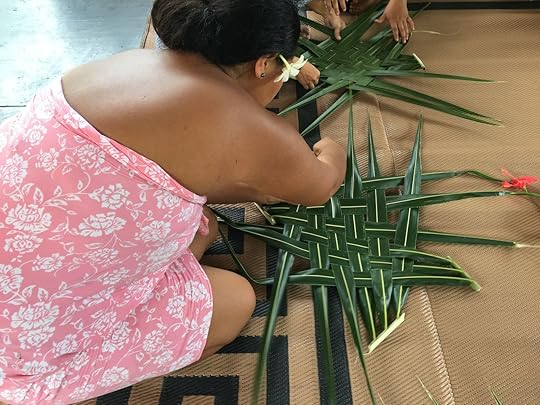
Photo: Mark Orwoll
One of the newest ways to experience the depth of Polynesian culture is to visit the nonprofit Espace Loisirs Kultur (ELK), a cultural center on the island of Moorea.
“We want to teach our children about our culture,” says Teina Tuanua, born on the Polynesian isle of Rapa and a cultural interpreter at ELK. “These things aren’t taught in our schools, but we don’t want to lose them.”
The roster of activities is like a restaurant menu: lei-making, palm-frond basket-weaving, ukulele-building and -playing, and traditional dance. Guests can come to ELK for the whole day, and the center’s staff will build a program around their interests, including massage, coconut-oil-making, and Tahitian language lessons. (They don’t currently have a tattoo or traditional fishing program, but they are developing them.) The goal is to offer a comprehensive exploration of all things Polynesian.
The center’s programs also include such homey offerings as oral traditions. The Legend of the Coconut, for instance, is told by Tore Tamara, who was born in Tahiti in 1945. Today he wears a traditional skirtlike pareu and a crown of palm leaves, but his deep-brown chest and shoulders are shirtless, exposed to the harsh Tahitian sun. “The prince of the lake was a big eel,” he says in his native tongue, while Teina translates. “Maui cut off its head and gave it to Hina, who set it down. There, coconut trees began to grow…”
Without an education system willing or able to carry out the mission, ELK has determined to spread such Polynesian traditions to Tahiti’s youth, as well as to share those traditions with visitors from across the seas.
On the dance floor

Photo: Tahiti Tourisme/Facebook
Tahitians throughout history have danced for many reasons — for weddings, to welcome visitors, to honor community milestones. Dance is a joyous expression of the Polynesian spirit of celebration and hospitality. But because of the hip-shaking and exposed flesh of the dancers, European colonizers banned the practice in the 19th century for being too overtly sensual. The tradition wasn’t revived until the 1950s, and its regrowth was slow.
Today, though, Polynesian dancing, by men and women, is once again a cherished part of local life. Dance schools are rife in the islands, specializing in Ori Tahiti — similar to but distinct from Hawaiian hula. Many of them offer one-day group or private lessons at the schools or nearby hotels. Large resorts throughout the islands routinely stage Polynesian dance shows, often as part of a dinner-and-show package. Travelers to the Islands of Tahiti in July are fortunate because they can witness those dance traditions during the annual Heiva I Tahiti competitions, the Olympics of Tahitian dance. Events are held on Bora Bora, Raiatea, Moorea, Huahine, Rurutu, Nuku Hiva, and the main island of Tahiti, where the biggest festival is held.
But dance isn’t mainly about contests.
“It’s my culture, our culture, my soul,” says Hianau Laughlin (sister of canoeist Milton Laughlin) who runs the Moeata dance school just outside of Papeete. “Ori Tahiti. I grew up every day with dancing and singing. Our life is dancing and singing.” 
More like thisBeaches + IslandsForget Bora Bora. The best island to visit in Tahiti is Moorea.
The post In French Polynesia, ditch the jetski and get to know the island’s Indigenous culture appeared first on Matador Network.

SF’s Cliff House is closing for good

Like so many restaurants during 2020, San Francisco’s historic Cliff House will be closing permanently. On Sunday, the 157-year-old restaurant announced that it would be closing its doors on December 31 due to both the COVID-19 pandemic and delays by the National Park Service in agreeing to a long-term contract.
The restaurant ended indoor dining back in March and shut down 10 weeks later after only offering takeout service. After another stint of takeout-only in the summer, the restaurant determined that the business model simply wasn’t sustainable. The Cliff House’s contract with the National Park Service expired in 2018, and the restaurant has been hoping for a long-term extension ever since. Instead, the NPS’ delay forced the restaurant to operate under a series of short-term contracts that proved detrimental to business. That delay, combined with the devastating effects of the pandemic, led to the decision to close permanently.
Owners Dan and Mary Hountalas said in a statement, “The National Park Service should have selected an operator on a long-term basis to ensure the continued operation of this national treasure.”
The Cliff House was built in 1863 and has been visited by five US presidents during the course of its life. It’s assumed many identities over the years but has been a staple of San Francisco for as long as many can remember. It’s unclear what will happen to the building after the closure. 
More like thisFood + Drink5 dishes that should be on your menu in San Francisco and where to find them
The post The Cliff House restaurant, a 157-year old San Francisco icon, is closing its doors appeared first on Matador Network.

Japanese schools serving Kobe beef

School lunches aren’t exactly known for their quality or creativity. If you were lucky, the best you could look forward to was pizza day, when the lunch lady would slap a slice of reheated pizza on your tray. In Japan’s Hyōgo Prefecture, kids are treated to a slightly more upscale experience.
Around 1,250 public elementary schools in the prefecture serve Kobe (or wagyu) beef to students. The city of Kobe is known for its high-quality cattle, and since it’s located in the Hyōgo Prefecture schools can actually take advantage of the precious local meat. In October schools started serving Kobe beef sukiyaki and Kobe beef stew because decreased restaurant operations have resulted in an excess of prime meat. It might be one of the only silver linings of the pandemic for Japanese students, and it will continue until early 2021.
Last spring, when the pandemic began, the Japanese government announced that it would pay for the prefectures’ costs of buying wagyu and seafood to help suppliers struggling to make ends meet. A spokesperson from the Hyogo Prefecture Meat Industry Co-operative Association said, “Some stores had no customers to sell meat to. They had so much in their inventories that they could not store it all in their fridges. We appreciate the stable consumption.”
And kids certainly appreciate it too. According to Food & Wine, one 12-year-old said, “This is the best meat I’ve ever eaten. Without a doubt. I’m gonna brag about it to my parents.” 
More like thisCultureBeef is the least interesting thing about Kobe, Japan
The post Japanese elementary schools are serving luxe Kobe beef due to pandemic surplus appeared first on Matador Network.

Matador Network's Blog
- Matador Network's profile
- 6 followers



